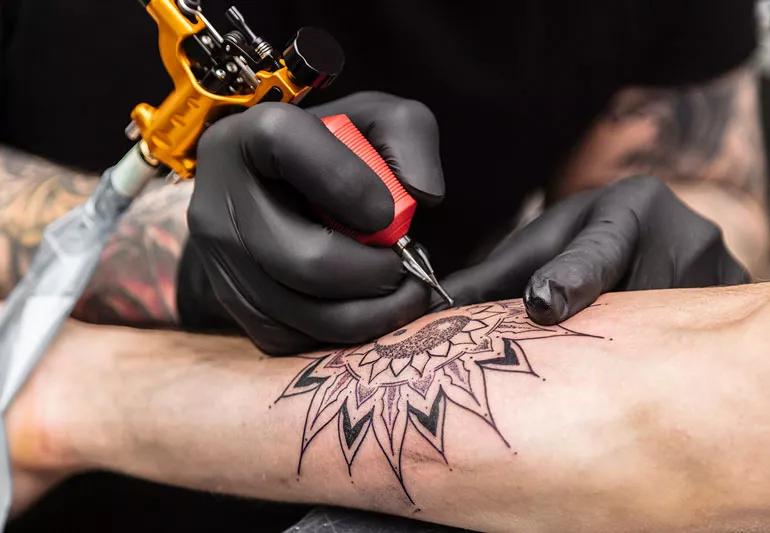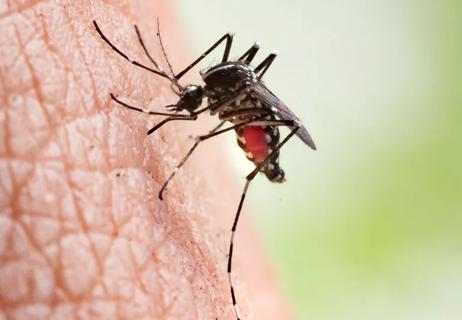How to care for new ink — and what’s cause for concern as it heals

Thinking about new ink? Tattoos are getting more popular all the time. A 2019 poll found 30% of Americans have at least one tattoo, up from just 21% in 2012.
Advertisement
Cleveland Clinic is a non-profit academic medical center. Advertising on our site helps support our mission. We do not endorse non-Cleveland Clinic products or services. Policy
The majority of those branding sessions go off without a hitch. “In most cases, tattoos aren’t harmful,” says dermatologist Alok Vij, MD. “But there are some risks you should know about if you’re considering a tattoo.”
Modern tattoo artists perform their magic with machines that use multiple needles to inject colored pigments into the dermis, the middle layer of skin. Unsurprisingly, that doesn’t feel great. “Getting a tattoo can be painful,” Dr. Vij says.
While the pain is temporary, the artwork is forever. “One of the biggest risks is tattoo regret,” cautions Dr. Vij. (Sure, there’s laser tattoo removal, but it’s painful, expensive and can take months). That’s why it’s good to stop and think a minute before you get your new crush’s name etched into your skin.
Besides pain and potential regret, there are some possible health risks from tattoos, Dr. Vij says:
Advertisement
The majority of tattoos heal fine without lasting problems, however. “These complications are rare, but it’s good to be aware of the possibility,” Dr. Vij says.
Ready to make your mark? Dr. Vij offers these pointers for a smooth (and safe) tattoo experience.
Look for a clean, well-run shop with licensed tattoo artists and sterile equipment. Ask if the artist has experience working on clients with your skin tone, Dr. Vij advises. “Pigments can appear different on fair skin versus darker skin,” he says.
Never resort to home tattoo kits, even if the person doing it says they have plenty of experience. Permanent body modification isn’t the time to cut corners.
Go in with clean skin. And hold off if you have any rashes or infections, Dr. Vij says.
Ibuprofen and aspirin can increase the risk of bleeding, so they aren’t the best painkillers to choose if you’re gearing up to get inked, Dr. Vij says. Instead, reach for acetaminophen, which doesn’t carry a risk of bleeding. Alcohol can also increase the bleeding risk (not to mention the risk of tattoo regret), so don’t schedule your tattoo after happy hour.
You can expect your new tat to smart a bit the day you get it, but it should feel better over the next few days. Here’s how to help the healing process along.
Your tattoo artist should send you home with instructions for caring for your body art. You’ll need to keep it covered for 24 hours. “Soak the bandage in warm water to soften it before gently peeling it off,” Dr. Vij says. “Then wash it with a gentle cleanser and warm water to remove scabbing or crusting.”
Slather your new tattoo with a thick layer of mild ointment like petroleum jelly, Dr. Vij says. “Scabbing and crusting delay healing, so keep it well moisturized.”
Some redness, flaking and scabbing are normal as your tattoo heals, Dr. Vij says. But see a doctor if you notice any signs of infection:
Some inks can fade in response to UV light. Sun damage can also weaken the collagen fibers in the dermis, where the pigment is housed. To keep your new artwork looking bright and crisp, coat your tattoo with sunscreen when you’re out in the sunshine, Dr. Vij says. (But you were wearing sunscreen anyway, right?)
With the right TLC, your new body art will soon be healed and just another beautiful part of the skin you’re in.
Advertisement
Advertisement
Learn more about our editorial process.
Advertisement

Understand the risks and take precautions against infection

Learn the proper care and when to seek help after you’ve scratched a bit too much

Most recommended precautions center around minimizing bruising or swelling

Even one drink can have an impact on your cognitive function leading to slurred speech, blurred vision and impaired memory

Understand who may (and may not) benefit

Type 2 diabetes isn’t inevitable with these dietary changes

Applying a hot or cold compress can help with pain